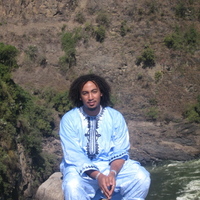Papers by Geert Castryck
4 Mission Spaces in German East Africa: Spatial Imaginations, Implementations, and Incongruities against the Backdrop of an Emerging Colonial Spatial Order
Transnational Religious Spaces
Reinventing International Colonialism during a Crisis of Empire: Belgian-British Colonial Exchanges between Inter-Imperialism and Inter-Colonial Technical Cooperation, 1920s–1930s
The Journal of Imperial and Commonwealth History
The Routledge Handbook of Transregional Studies, edited by Matthias Middell (Abingdon: Routledge), 2019
This chapter, based on a brief overview of approaches in Indian Ocean studies, depicts the Indian... more This chapter, based on a brief overview of approaches in Indian Ocean studies, depicts the Indian Ocean world as a historical and epistemological trans-region, as a space of transfers between and transformations of regions, and as an area that transcends its confines. In so doing, the Indian Ocean serves as an entry point for applying different transregional perspectives.
Hermes: Tijdschrift voor geschiedenis, 2016
Transnational Religious Spaces: Religious Organizations and Interactions in Africa, East Asia, and Beyond, edited by Philip Clart and Adam Jones (Berlin: De Gruyter Oldenbourg), 2020
In the first decade of the twentieth century, Protestant and Catholic missions throughout German ... more In the first decade of the twentieth century, Protestant and Catholic missions throughout German East Africa were in conflict over their spaces of missionary activity. Solving the

The Many Facets of Global Studies: Perspectives from the Erasmus Mundus Global Studies Programme, edited by Konstanze Loeke and Matthias Middell (Leipzig: Leipziger Universitätsverlag), 2019
If globalization is a historical process of large-scale integration and intensified interaction t... more If globalization is a historical process of large-scale integration and intensified interaction through flows of people, goods, capital and ideas, then it seems natural that global studies primarily focuses on these movements and on interaction and integration between different places, rather than on particular localities. On top of that, the words 'flows' and 'integration' may project a false impression of smooth and homogenizing developments, whereas in fact inequality, asymmetries, conflict and domination are intrinsic to processes of globalization. One possible way to overcome the trap of charming linear narratives that are not rooted in particular places is to formulate precise empirical research questions. Specifying where, when and by whom flows, integration and interaction were produced, helps to identify different perspectives, practices and experiences of globalization. Historicizing, space-specific and actor-oriented approaches enable global studies scholars to combine the investigation of macro-processes of globalization with empirical micro-research that lays bare specific instances and different intensities of interactions and integration. Along with several contributions to this textbook (e.g. insular history, cultural brokerage, the countryside and gender to name but a few), this essay on
Spatial Formats under the Global Condition, edited by Steffi Marung and Matthias Middell (Berlin: De Gruyter), 2019
It has been argued that the first places of genuine global integration, where people, capital, go... more It has been argued that the first places of genuine global integration, where people, capital, goods, and ideas from across the world came together, were colonial cities. 1 When looking more closely, it appears that the argument primarily targeted port cities in Asia, Africa and the Americas. In these places, more than in many European towns in early colonial times, people from different parts of the world lived, worked and traded,

International Journal of African Historical Studies, 2019
In the second half of the nineteenth century, the spatial order in the Lake Tanganyika region was... more In the second half of the nineteenth century, the spatial order in the Lake Tanganyika region was repeatedly and thoroughly redefined. The frontier character of the lake at the crossroads where resources, produce and skills met, was overshadowed by the westward moving frontier of an expanding global market under the guise of an Arab-Swahili-led trade network, which was in turn overrun by European colonization and the drawing of territorial borders. Throughout the nineteenth and twentieth centuries, Kigoma-Ujiji also experienced massive immigration from around and across Lake Tanganyika, including waves of refugees from Burundi and East Congo in the past decades. Although this process started long before national territories and boundaries were defined, the continued arrival of newcomers cultivates narratives depicting Kigoma-Ujiji as a town of foreigners or of 'Congolese'. Remarkably, the descendants of the first inhabitants, dating back to the establishment of an urban area in the nineteenth century, sympathize and identify with refugees of contemporary conflicts. This paper argues that the succession of spatial orders in the area provides the historical context to distinguish between successive groups of urban settlers, but also to understand their sense of a common destiny under the dominant territorial/national spatial order of today.

International Journal of African Historical Studies, 2019
This issue takes up the invitation Howard and Shain and the example of African borderlands studie... more This issue takes up the invitation Howard and Shain and the example of African borderlands studies to reconstruct the production and imagination of space, and of territoriality in particular, from the eve of the colonial period until its aftermath. Different conceptions of space, territoriality and boundaries have played an important role in the colonial history of Africa. As space is everywhere and space is (hu)man-made, a focus on space allows us to come to an interactive understanding of African colonial history without a priori privileging, excluding or exoticizing any group of actors. The focus is on areas close to territorial borders in ‘Berlin’s Africa’, that is the parts of East and Central Africa directly concerned by the Berlin Congo conference of 1884/5. This focus allows us to critically reassess the both overestimated and underestimated impact of this conference, and of colonialism more generally, on territorialization and space-making in Africa. Contributions to this issue include both analyses of interactive spatial practices and interpretations of spatial narratives, and taken together they overcome the teleology of the eventual borders and the rigidity of a colonial timeframe from 1885 until decolonization.
History in Africa, 2019
Regional distinctions such as "East" and "Central" Africa have been constructed, originally very ... more Regional distinctions such as "East" and "Central" Africa have been constructed, originally very much from an outsiders' perspective. Different East and Central African historiographies reflect-and reproduce-these distinctions. However, the inhabitants of those spaces never stopped crossing and entangling them. Likewise, this section approaches East and Central Africa empirically as a space of historical entanglement. Moreover, the authors tackle the traditional divide between both regions epistemologically, by transferring research perspectives from one region's historiography to the other. They thus illustrate that bridging histories of East and Central Africa can reveal histories that would otherwise remain hidden or marginal.

Journal of Eastern African Studies, 2020
Histories of decolonization in Africa tend to present a unidirectional
process with the eventual ... more Histories of decolonization in Africa tend to present a unidirectional
process with the eventual independent states as the seemingly
natural outcome, thus ignoring or distorting actions and actors
with transnational or translocal agendas. In the case of Burundi,
decolonization is presented either as national liberation or as a
prelude to ethnic conflict within a national frame of reference.
Both strands eclipse the initial exclusion of Burundian
independence, which hit the Muslim or Swahili minority in
Burundi’s urban centers. In this paper, I demonstrate how from
1955 onwards several Muslims in Burundian towns along Lake
Tanganyika contributed significantly to the creation of a state
from which they were eventually excluded. Thus, analogous to the
French Revolution, the Burundian decolonization devoured its
children. I continue explaining how political stances of some
Muslim protagonists gradually diverged in light of the
exclusionary politics of colonial authorities and Burundian
nationalists. The omission of such local and translocal, national
and transnational histories stands in the way of understanding –
both of and in Burundi.

History in Africa, 2019
This article applies a trans-local approach to make sense of the internal dynamics in the Muslim ... more This article applies a trans-local approach to make sense of the internal dynamics in the Muslim community of colonial Bujumbura. The establishment of the community and its religious evolutions from a practical living of Islam, over Qadiriyya Sufism to Islamic Reform are interpreted in relation to on the one hand religious tendencies in East African Islam, and on the other hand processes of integration, marginalization, and exclusion in an urban, colonial and Burundian context. The social needs and challenges on the local level found an answer in religious intensification and a widening of the geographical scope, drawing on age-old connections across East and Central Africa.
--
Résumé: Cet article poursuit une approche translocale afin de mieux comprendre la dynamique interne de la communauté musulmane de Bujumbura à l'époque coloniale. Le développement de cette communauté ainsi que ses évolutions religieuses-d'abord un islam vécu d'une manière pratique, puis le soufisme de la voie Qadiriyya, enfin la réforme islamique-sont interprétés suivant deux axes: d'une part, en rapport avec les développements de l'islam est-africain et, d'autre part, par rapport aux étapes successives d'intégration, de marginalisation et d'exclusion à plusieurs échelles 2 (contextes urbain, colonial et burundais). L'intensification et le resserrement de la religion, ainsi que l'élargissement de la portée géographique, fondés sur des réseaux de longue durée en Afrique centrale et orientale, ont permis aux musulmans de Bujumbura de faire face à des défis sociaux au niveau local.

The world is increasingly conceived as an interconnected whole. This truism is often understood a... more The world is increasingly conceived as an interconnected whole. This truism is often understood as a process of global incorporation revolving around a centre situated in the Global North. This chapter supports the view that in order to grasp global integration, one also needs to consider the dynamics and distortions taking place at the edges of the globe. Kigoma-Ujiji, a town on the border straddling Lake Tanganyika, allows one to make sense of the "debris" of proto-colonial, colonial and post-independence global incursions in the area, and at the same time of traces these interactions have left in other spaces and on other scales. Reminiscences of Kigoma-Ujiji in regional and global imaginations, although distorted, are concomitant with perceptions of and self-perceptions in the town, and these reminiscences are linked to historical dynamics of both local and global relevance. The way global interconnectedness is played out in urban Kigoma-Ujiji can be understood as a
Book Reviews by Geert Castryck
Books, Special Issues by Geert Castryck
The Journal of Imperial and Commonwealth History, 2020











Uploads
Papers by Geert Castryck
process with the eventual independent states as the seemingly
natural outcome, thus ignoring or distorting actions and actors
with transnational or translocal agendas. In the case of Burundi,
decolonization is presented either as national liberation or as a
prelude to ethnic conflict within a national frame of reference.
Both strands eclipse the initial exclusion of Burundian
independence, which hit the Muslim or Swahili minority in
Burundi’s urban centers. In this paper, I demonstrate how from
1955 onwards several Muslims in Burundian towns along Lake
Tanganyika contributed significantly to the creation of a state
from which they were eventually excluded. Thus, analogous to the
French Revolution, the Burundian decolonization devoured its
children. I continue explaining how political stances of some
Muslim protagonists gradually diverged in light of the
exclusionary politics of colonial authorities and Burundian
nationalists. The omission of such local and translocal, national
and transnational histories stands in the way of understanding –
both of and in Burundi.
--
Résumé: Cet article poursuit une approche translocale afin de mieux comprendre la dynamique interne de la communauté musulmane de Bujumbura à l'époque coloniale. Le développement de cette communauté ainsi que ses évolutions religieuses-d'abord un islam vécu d'une manière pratique, puis le soufisme de la voie Qadiriyya, enfin la réforme islamique-sont interprétés suivant deux axes: d'une part, en rapport avec les développements de l'islam est-africain et, d'autre part, par rapport aux étapes successives d'intégration, de marginalisation et d'exclusion à plusieurs échelles 2 (contextes urbain, colonial et burundais). L'intensification et le resserrement de la religion, ainsi que l'élargissement de la portée géographique, fondés sur des réseaux de longue durée en Afrique centrale et orientale, ont permis aux musulmans de Bujumbura de faire face à des défis sociaux au niveau local.
Book Reviews by Geert Castryck
Books, Special Issues by Geert Castryck
process with the eventual independent states as the seemingly
natural outcome, thus ignoring or distorting actions and actors
with transnational or translocal agendas. In the case of Burundi,
decolonization is presented either as national liberation or as a
prelude to ethnic conflict within a national frame of reference.
Both strands eclipse the initial exclusion of Burundian
independence, which hit the Muslim or Swahili minority in
Burundi’s urban centers. In this paper, I demonstrate how from
1955 onwards several Muslims in Burundian towns along Lake
Tanganyika contributed significantly to the creation of a state
from which they were eventually excluded. Thus, analogous to the
French Revolution, the Burundian decolonization devoured its
children. I continue explaining how political stances of some
Muslim protagonists gradually diverged in light of the
exclusionary politics of colonial authorities and Burundian
nationalists. The omission of such local and translocal, national
and transnational histories stands in the way of understanding –
both of and in Burundi.
--
Résumé: Cet article poursuit une approche translocale afin de mieux comprendre la dynamique interne de la communauté musulmane de Bujumbura à l'époque coloniale. Le développement de cette communauté ainsi que ses évolutions religieuses-d'abord un islam vécu d'une manière pratique, puis le soufisme de la voie Qadiriyya, enfin la réforme islamique-sont interprétés suivant deux axes: d'une part, en rapport avec les développements de l'islam est-africain et, d'autre part, par rapport aux étapes successives d'intégration, de marginalisation et d'exclusion à plusieurs échelles 2 (contextes urbain, colonial et burundais). L'intensification et le resserrement de la religion, ainsi que l'élargissement de la portée géographique, fondés sur des réseaux de longue durée en Afrique centrale et orientale, ont permis aux musulmans de Bujumbura de faire face à des défis sociaux au niveau local.